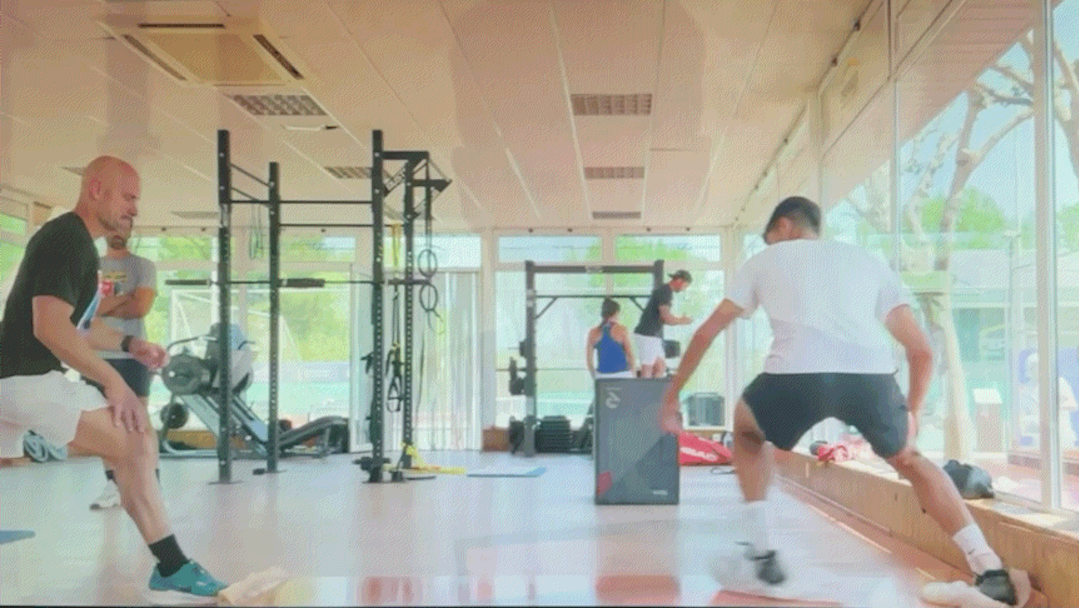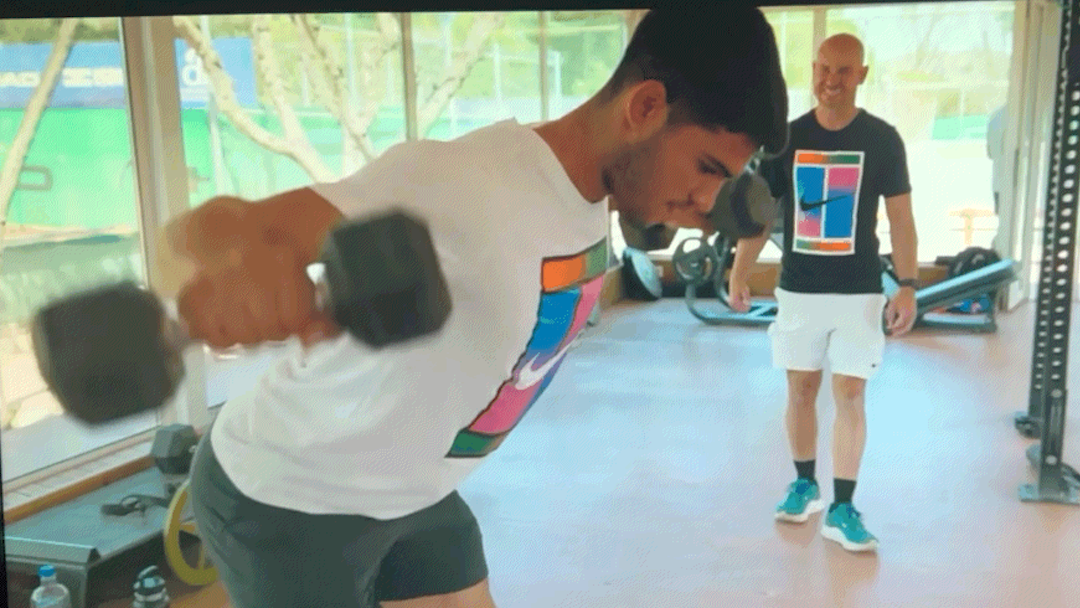A few years ago, I played a practice match at a local high school where someone had chalk-marked what I assumed to be a cardio fitness circuit around the sides of the tennis court. While I don’t want to encourage or glorify defacing courts in this way, as chalk can permanently damage the surface, the stations themselves were intriguing. I took photos that languished on my phone until I decided to write a post about each one. This is the penultimate installment in that series.
One of the stations was marked “Split Step,” so I felt initially confident that this fitness circuit was specifically designed for tennis players. However, that may have been a hasty conclusion. While the split step is crucial in tennis, it is also a foundational move for athletes across any sport that requires agility. For tennis, the technique consists of a small hop or bounce in which players execute a split second after their opponent strikes the ball. It primes the body for rapid, multidirectional movement, allowing players to react quickly and explosively to any shot. It’s a critical skill that can make all the difference between reaching a well-placed ball or being caught flat-footed.
Even though a split step is key to playing great tennis, there is still somewhat of a mystery about the precise move that would have been performed at this station. The phrase “split step” does not appear in the common CrossFit vernacular. If this was a timed circuit, it is possible that the intent was for participants to execute the split step by repeatedly hopping, landing balanced, and staying light on their feet. Another alternative would be a more dynamic drill involving movement after the split step, such as quick lateral shuffles or sprints responding to imagined cues. It’s also worth considering that the station could have simply marked a transition point between two unrelated exercises.
There’s also a strong possibility that additional equipment was involved with this fitness circuit that could have lent additional context. For example, if a portable fitness ladder was spread out next to it, the direction could have instructed participants on the footwork pattern to use. That would render the chalk marks as instructions for using equipment as opposed to designating a station. I am pretty sure I will never confidently know the intent of this original trainer of yore.
My favorite way to practice the split step in an off-court setting is to combine it with watching televised tennis matches. While this method can be used with any match, it works best when only one baseline camera is used, which is the typical arrangement for the outer courts of tournaments during the early rounds. To execute this drill, I set myself up in front of the TV and pretend to be the player on the near side of the court. Essentially, I practice the timing of my split step along with the initial first move as if I were responding to the shot from the player on the far side of the net. My home gym is rather small, so that’s basically all I have room to execute.
Practicing the split step in any context, whether on or off court, provides immense benefits for building muscle memory and reflexes. Repeating the motion trains the body to instinctively execute the move under pressure, making it a natural reaction rather than a conscious effort. That is invaluable in high-stakes situations where every fraction of a second counts. Focusing on the timing and mechanics of the split step lays the groundwork for better agility.
Players who are serious about improving their tennis performance levels will find creative ways to practice the foundational skills. Working on the split step in off-court settings is a prime example of how that can be performed. Every bit of practice helps build a foundation of agility and readiness on the court. So, there is no need to wait for court time or warmer weather; this is a drill you can start right now that might have a transformative difference in your game.
I recently ran across this YouTube video that describes a variation of my method of using televised matches to practice the split step.



